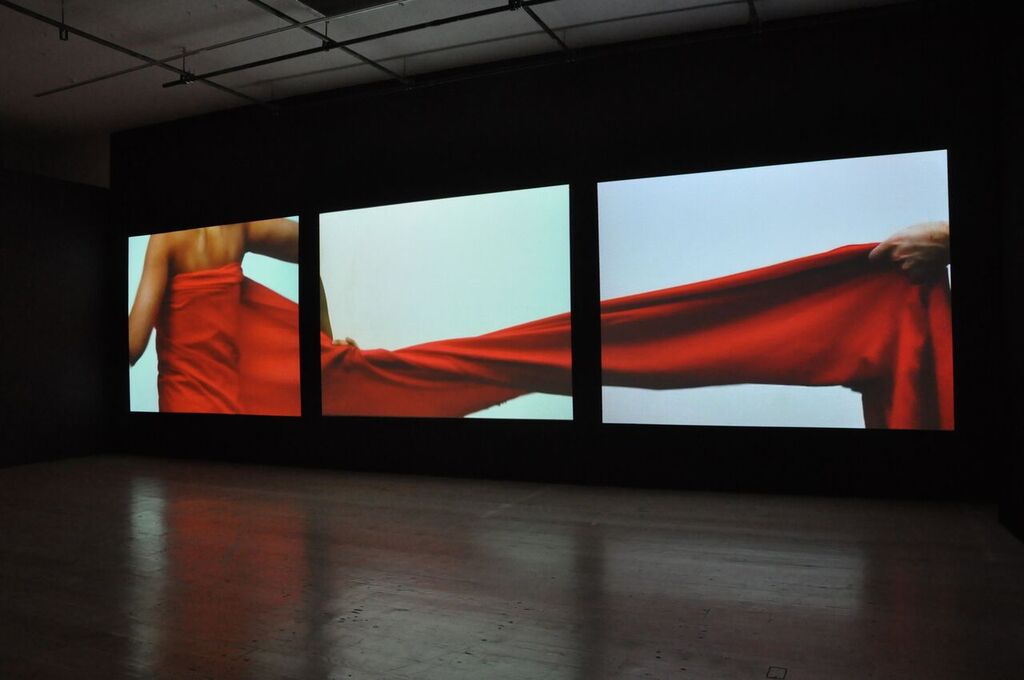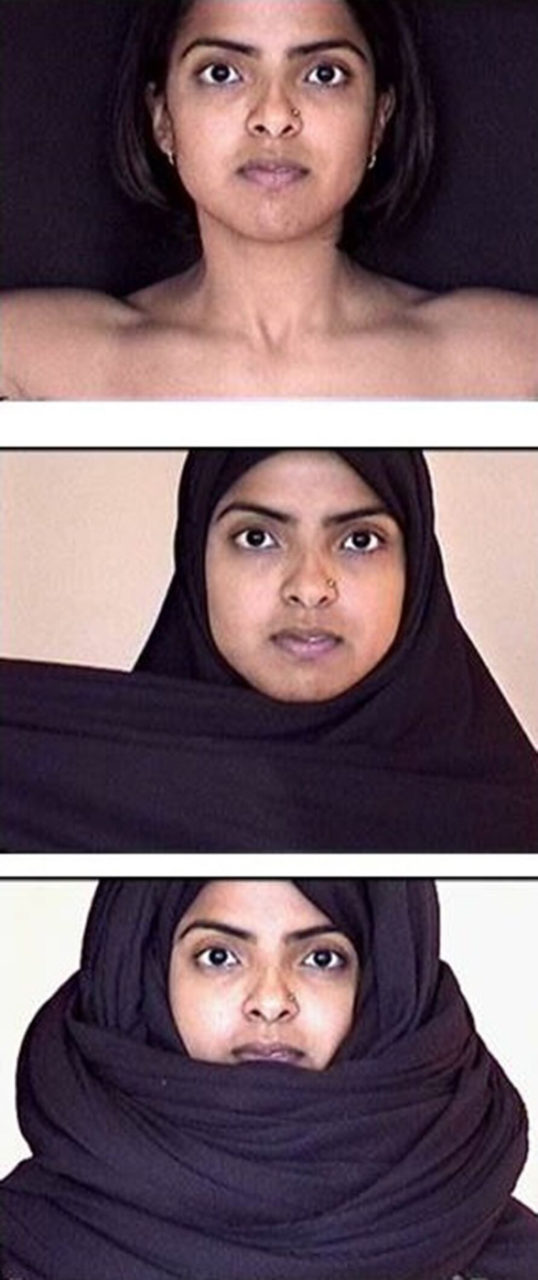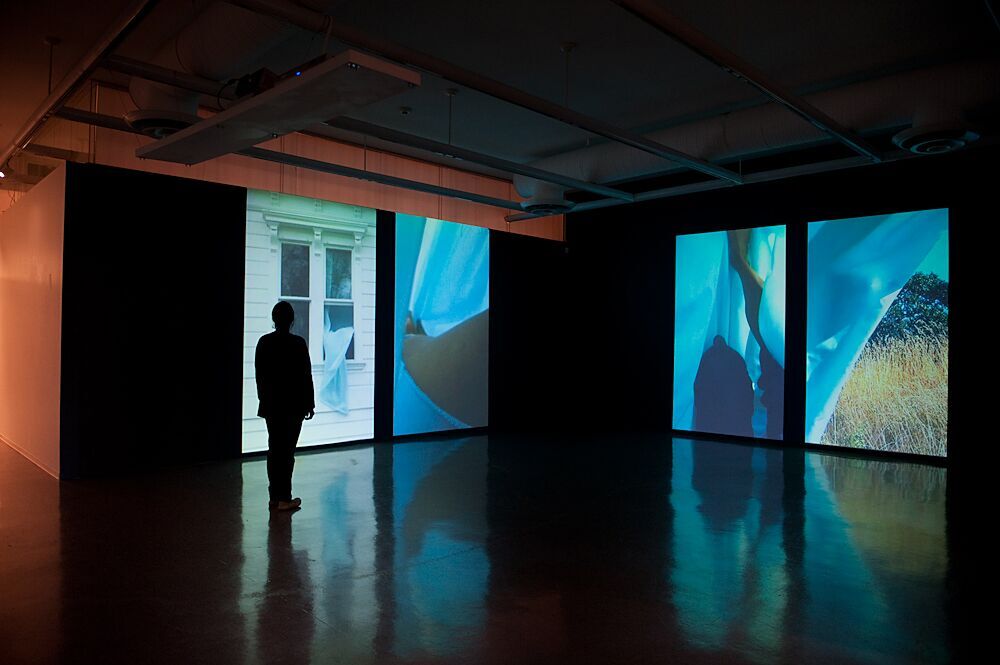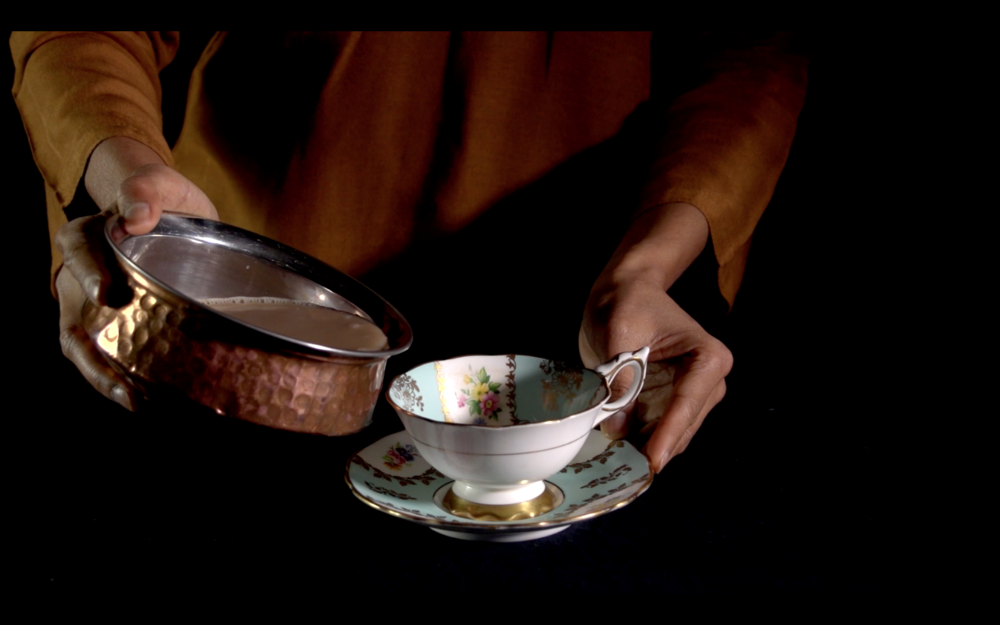Interview with Farheen HaQ
By Marie-Hélène Lemaire – DHC/ART Education
Faith and Fashion: Religion, Dress and Politics
Marie-Hélène Lemaire: On March 16, 2016, you participated in a round-table event presented by DHC/ART Foundation for Contemporary Art, in association with London College of Fashion, entitled Faith and Fashion: Religion, Dress and Politics. Invited by DHC/ART curator Cheryl Sim, Reina Lewis, author of Muslim Fashion: Contemporary Style Cultures and professor at London College of Fashion (UAL), brought her Faith and Fashion panel series to Montreal. The panel comprised Reina Lewis, Jasmin Zine, Cheryl Sim, Yasmin Jiwani and yourself. Thank you very much for accepting to do this interview, as a way for us to continue the conversation.
At the conference, you mentioned that the role of contemporary artists is to constantly create new and evolving images. As an artist of South Asian Muslim heritage, creating these ever-changing images is for you at once a gesture of resistance and a way to offer alternative images to stigmatized images of Muslim women. In Endless Tether (2005), you stretch and fold a piece of long red fabric, a syncretic image of hijab becoming sari, as a metaphor for this idea. Could you expand more on this?
Farheen HaQ: I believe that one of the most important roles of artists in society is to be observers. In my work, I use the space of imagination to create images that are not possible or seen yet in the world as a way to question structures that govern women’s bodies. So I use formal properties of my cultural background – like a hijab or sari and take creative licence with these objects to reimagine them and create new relationships between the body and fabric. Part of my motivation for works like Endless Tether and (un)covering are to make works that question the conventional ways we experience images of Muslim women. Using moving images is also key as a way to create images and representations that are constantly shifting and not static.

Photo: Farheen HaQ, Endless Tether, 2005.
MHL: As a young artist, you created a piece entitled (un)covering (2002), exploring the notion that the body is a cultural text, you wondered: How am I read when I am veiled? How I am read when I am unveiled? In your more recent work, Confess Conceal (2011), you investigate notions of covering/uncovering, veiled/unveiled in a different way, starting from your own subjective somatic experience, but trying to open it up to include a lot of other experiences. I would suggest that you are shifting from the cultural analysis of 'the body as text' towards the phenomenological study of 'the body as movement'. Could you talk about this shift?
FH: Yes, my early work was interested in the body as text, more as something passive that is read or received. By placing myself in my work and creating performative videos, my process revealed that the body was indeed the place of meaning and experience but it was also an active agent in creating experience. So rather than exploring the body as simply text to be read, I have become interested in how the body is the landscape that holds and witnesses our emotional, physical, and spiritual lives. This informs the gestural focus of my work: how I pull out gestures and movement of the body in my videos. I work to create a psychological experience that places viewers in my body or better able to relate to my body. This way of working with the somatic body has allowed me to continue to work from very personal memories and experiences (such as walking through the curtain that segregates men and women at a mosque) and relate them to any viewers’ experience of segregation or being hidden or seen.

Photo: Farheen HaQ, (un)covering, 2002.
MHL: At the conference, you mentioned that your process is centered on the following three ideas: remember, reconsider and reimagine. In your work, you engage with certain objects – such as your mother's teacup, a hijab-sari fabric, curtains, tablecloth – via ritual, devotional and sensuous gestures, which seems to allow for practices of remembrance, reconsideration and reimagining. Is this a possible way to see your practice? If so, why?
FH: This is very much how I see my practice. I excavate and mine personal memories, early gestures or movements of the body and in the space of imagination, filming or performative ritual/gesture I reconsider these objects or gestures I have inherited. That is where the work begins: in the seeing and framing of the gesture or object. In remembering, I begin to stretch or pull apart things in order to reconsider and then re-imagine them. This is the potency of art for me: to create new, to imagine a new possibility and to question what is real in this world.

Photo: Helen Cyr. Farheen HaQ, Confess Conceal, 2011.
MHL: At the Faith and Fashion event, many panellists spoke at different points of how young Muslim women today are challenging what Reina Lewis described as the 'rescue narrative' or what you referred to as the 'powerless Muslim woman figure'. Could you elaborate on this idea in the context of your own research and art practice?
FH: Mainstream media does not offer us diverse images that are created by Muslim women. We are still inundated with stigmatized images of veiled women who are in need of liberation. Muslim women are not a static, homogenous group. Much of the reason I began my early work in self-portraiture was to see images of myself and to create work that claimed my Muslim identity. Taking up space and creating work that unravels the layers between the body, fabric and how my own identity has been constructed is a powerful act for me: I become an agent in my own representation. With the democracy of the web and the rise in various Muslim women’s blogs, it is very inspiring to see the diverse experiences and representations that are challenging our western views of Muslim women.

Photo: Farheen HaQ (collaboration with France Trépanier), Drinking From My Mother's Saucer, 2015.
MHL: Images of fluidity, folds and immersion permeate your work – the pouring of chai in your mother's tea cup, your body adrift in blue water, or moving through undulating curtains, or enfolded in red fabric –, how is this sensuous epistemology a possible liminal place of transformation and agency for you, and possibly for other women?
FH: Fluidity and motion are very important factors in understanding ourselves, I believe. The work I do is to understand myself as an ever-changing being and the less I try to box myself into labels that only point to one aspect of my being (South Asian, Muslim, woman, mother, Canadian, etc.), the better I understand myself. I believe that is the power of moving images and the power I have as an artist working in video: that I get to create my own images of myself and be an agent in representing myself. When others view my work I invite them to come on a journey of self-reflection, and hopefully they come to understand themselves as ever-changing subjects as well.
Find out more about Farheen HaQ:
farheenhaq.com
Photo: Marc-Olivier Bécotte (cover)